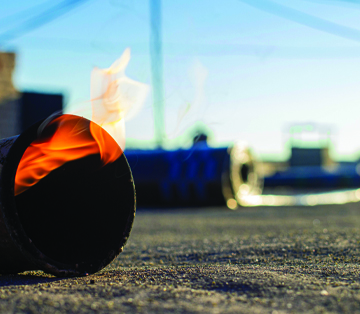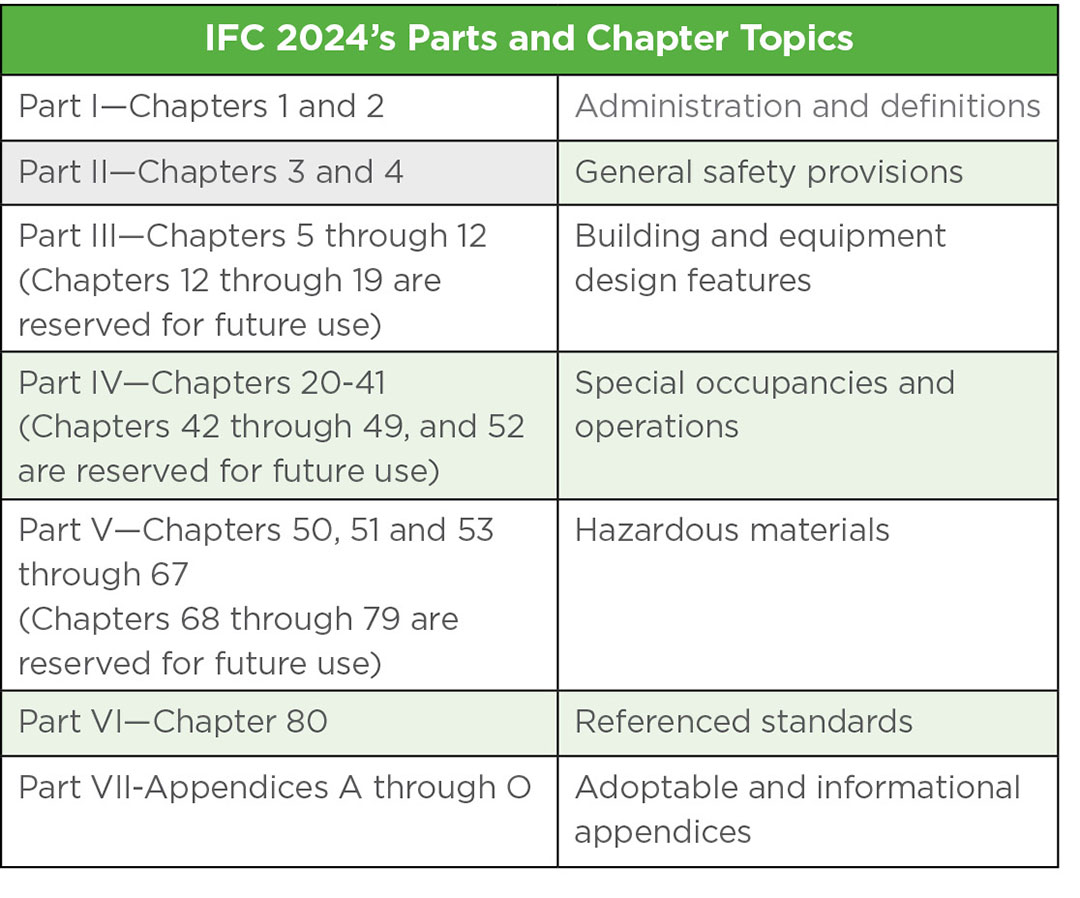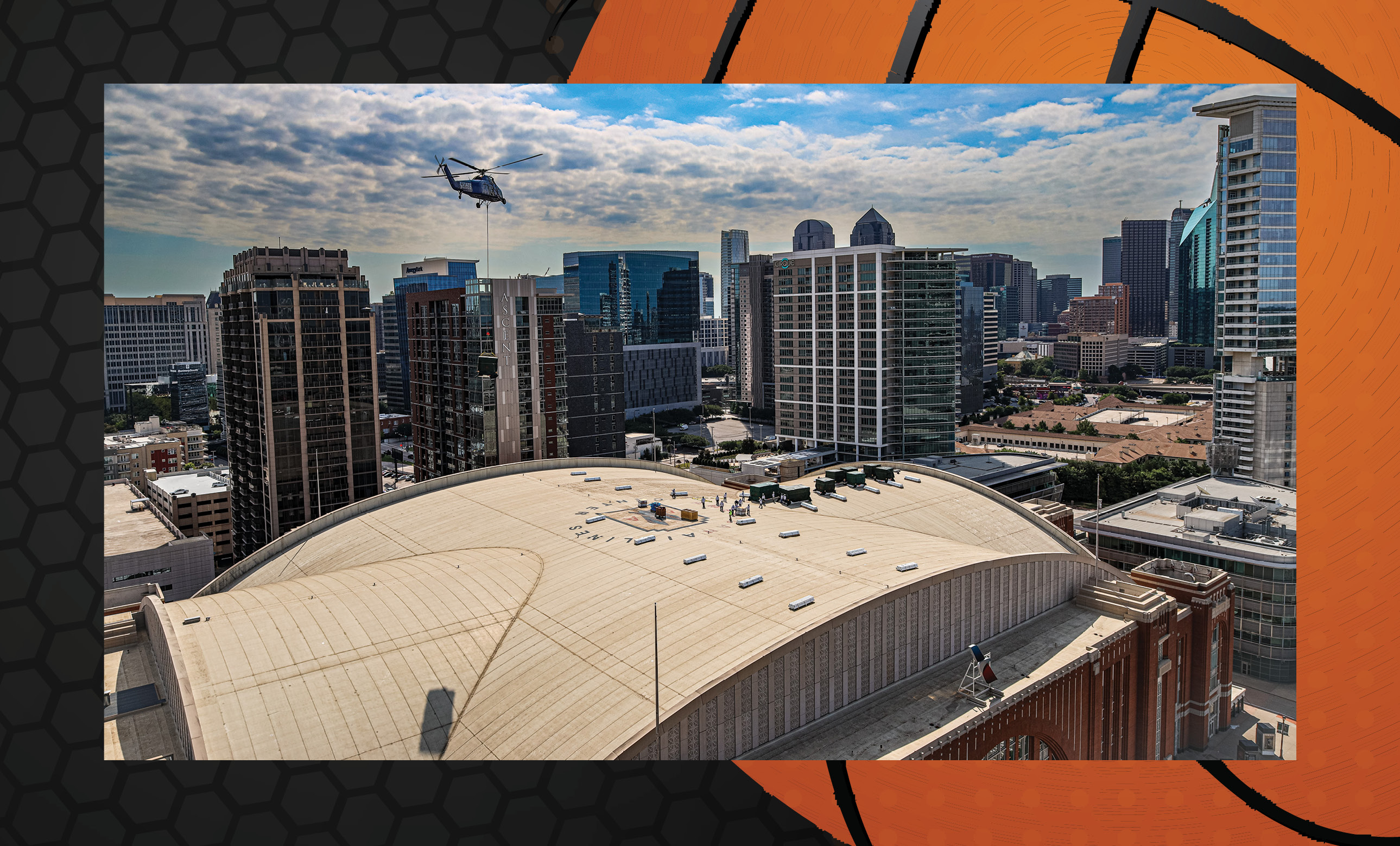
The International Code Council®’s International Fire Code® establishes minimum requirements that provide a reasonable level of life safety and property protection from the hazards of fire, explosions or dangerous conditions in new and existing buildings. It includes several roofing-related provisions.
IFC 2024
IFC first was published in 1997 and was written by a committee consisting of members of the three legacy model code organizations (Building Officials and Code Administrators International, International Conference of Building Officials and Southern Building Code Congress International). The committee’s draft generally was consistent with the existing model fire codes at the time (The BOCA National Fire Prevention Code, Uniform Fire Code and Standard Fire Prevention Code).
In 2000, IFC’s first edition was published using ICC’s code development process. New editions have been published every three years since with the most current edition being IFC 2024.
IFC 2024 is divided into seven parts with 50 chapters and 15 appendices (see figure). The appendices are not mandatory unless specifically referenced in a jurisdiction’s adoption ordinance.

The code is intended to apply to buildings and conditions arising after the adoption of IFC; existing buildings; and conditions that, in the opinion of the fire code official, constitute a distinct hazard to life or property.
IFC is intended to be used in concert with the International Building Code® and International Residential Code.® If there is a conflict between the provisions of IFC and IBC or IRC, IFC’s Section 102.10-Conflicting Provisions indicates the most restrictive provision shall govern.
Roofing considerations
IFC 2024’s roofing-specific provisions are spread throughout the code.
In Chapter 1-Scope and Administration, Section 105.5.25-Hot Work Operations indicates a hot work operational permit is required when applying roof coverings with an open-flame device. An example of an open-flame device is an open-flame torch used to apply polymer-modified bitumen membrane and flashing products.
Chapter 3-General Requirements, Section 303-Asphalt Kettles provides specific provisions for transporting, job-site placement, fuel container placement, operators, fire extinguishers and construction of roofing kettles. For example, Section 303.2-Location indicates kettles must not be placed within 20 feet of any combustible material, combustible building surface or opening. Roofing kettles and kettle operations must not block a building’s means of egress, roadways or building entrances. Kettles are not permitted to be used inside buildings or on rooftops.
Section 304-Combustible Waste Material provides requirements for handling combustible waste material, including roof tear-off materials. Section 304.1.2-Waste Material indicates accumulations of combustible or flammable waste or rubbish of any type are not permitted to remain on a roof.
Section 316.4-Obstructions on Roofs restricts rooftop obstructions that can hamper firefighter access. Wires, cables, ropes, antennas or other suspended rooftop obstructions on buildings with roof slopes of 7:12 or less must not create obstructions less than 7 feet high above a roof’s surface.
An exception to this requirement permits lower height obstructions where the obstruction is encased in a white 2-inch minimum diameter plastic pipe or a fire code official-approved equivalent.
Section 317-Vegetative and Landscaped Roofs provides requirements for maintaining vegetative and landscaped roofs, including provisions for supplemental irrigation, removing dead foliage, establishing a maintenance plan and storage of fueled maintenance equipment. Section 317.3-Maintenance Plan authorizes fire code officials to require a maintenance plan when a fire hazard exists or a building is exposed to a fire hazard because of a lack of rooftop maintenance.
In Chapter 12-Energy Systems, Section 1205-Solar Photovoltaic Power Systems provides provisions for rooftop-mounted PV systems, including access pathways, smoke ventilation and labeling of rapid shutdown equipment. For example, Section 1205.3-Other than Group R-3 Buildings indicates a minimum 6-foot-wide access pathway must be maintained around rooftop-mounted PV at a roof’s perimeter edges for firefighter access. An exception permits the access pathway to be reduced to 4 feet wide if the length or width of the building is 250 feet or less.
In Chapter 33-Fire Safety During Construction and Demolition, Section 3305.10-Safeguarding Roofing Operations provides provisions for roofing operations, including placement and use for roofing kettles, and fire extinguishers for roofing operations. The provisions for roofing kettles refer to Section 303. Section 3305.10-Fire Extinguishers for Roofing Operations requires at least one 3-A 40-B:C-rated fire extinguisher be on the roof during any roofing operations.
Closing thoughts
Building owners and operators, roof system designers and roofing contractors should be aware of the fire code and specific edition that applies to the buildings they work on.
IFC reportedly has been adopted by 31 states. To see a state list of IFC adoptions, go to iccsafe.org and enter “adoptions” in the search feature. Another fire code, the National Fire Protection Association’s NFPA 1, “Fire Code,” applies in most other jurisdictions.
NRCA has submitted several code change proposals during ICC’s 2024 Group A code development cycle intended to clarify IFC’s roofing-related requirements. If approved, the changes will be incorporated into IFC 2027.
IFC 2024 and its previous editions are accessible at codes.iccsafe.org.
MARK S. GRAHAM is NRCA’s vice president of technical services.
@MarkGrahamNRCA



